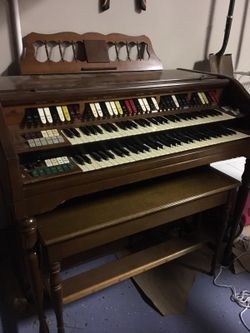

The great-grandfather to the synthesizer is not just mighty in terms of size but also in the countless special effects it can produce, including bird tweeting, rolling thunder, ship calls, fire alarms, car horns and the roaring of a steam engine.Newspaper advertisement for the Mayflower Theatre. It's housed today in Berlin's Musical Instrument Museum. And the organ deserved most of the credit."Įurope's largest existing and still playable "Mighty Wurlitzer" has over 1,000 pipes, 200 stops and a console finished in part with gold. It was such a tremendous success that for three weeks the Seattle police had to take care of the crowds that stood for three blocks waiting for their turn to get into the Liberty. They depended entirely on our organ for music. It had been built especially as a cinema theater. His son Farny took over the business and went on to bring the first jukeboxes to the market during the 1930s.īut the elder Wurzlitzer had plenty of other victories to look back on, as he wrote, "The first outstanding organ we built was the one we sold to the Liberty Theatre in Seattle. He died on January 14, 1914, in Cincinnati. Rudolph Wurlitzer did not live to experience the new instrument's worldwide success in the 1920s. Dubbed the "Mighty Wurlitzer," they would go on to achieve world renown.Īnother original model of the Mighty Wurlitzer from 1929

Wurlitzer offered Hope-Jones a chance to collaborate on creating an instrument, and by 1911 the first major theater organs had been developed. The latter had developed a new method allowing him to make multiple uses of a single organ pipe, meaning with just a few rose of pipes, he was able to generate hundreds of sounds and effects. In order to develop his vision of a one-man orchestra, he got in touch with the British organ-maker Robert Hope-Jones.
#Wurlitzer organ models movie#
Rudolph Wurlitzer wanted to put out an organ specially made for movie theaters that could play film music but also serve up the appropriate background noises. Generally a pianist played alongside the film, but for special premieres, an entire orchestra was often commissioned. In Buffalo, Rudolph also got to take in a presentation of the first silent films that were accompanied by live music. There, the precursor to the jukebox was hailed as the "eighth wonder of the world" and awarded a gold medal.īerlin houses a large and still playable Mighty Wurlitzer Wurlitzer's coin-operated piano was already a sensation in the US by the time it was exhibited at the Pan-American Exposition in Buffalo, New York, in 1901. On each piano are set ten pieces of music, which can be selected by the prospective purchaser." The tone is rich and charming, the expression natural and truthful. The same principle would later apply to jukeboxes.Īs he wrote in a company catalogue, "The possibilities of this instrument are simply marvelous. In 1899, he built the first coin-operated piano in the world, the tonophone, a self-playing piano using punched paper rolls that people could set into motion by inserting a coin. He experimented with the newly developed method of coding by means of punched tape - a method that could also be used to "program" musical instruments. But with his keen eye for a deal, he also watched the latest trends in instrument building - particularly the rising popularity of automated musical instruments. In 1880, Wurlitzer started producing his own pianos. In the same year, the entrepreneurial immigrant founded the Wurlitzer Company, opening up sales branches in all of the big American cities.

In 1856, Wurlitzer sent his family 700 dollars, asking that they deliver instruments to America for him. Wurlitzer marveled at how expensive the instruments were and decided to take a chance. The 22-year-old initially worked in a grocery store in New Jersey that was located close to a music store. Against his father's will, he emigrated to the US in 1853. Rudolph Wurlitzer, born on Januas the son of an instrument maker in the Saxon town of Schöneck, came to typify the American dream. In the years 1955 to 1960, the number of jukeboxes in West Germany increased tenfold to approximately 50,000. Bill Haley and Elvis Presley were the reigning kings of the charts. Young people who had neither radios nor record players at home could use them to hear their favorite music. Toss in a coin, select a song and watch as the record slides over and starts to play: for young people in the 1950s, jukeboxes were a main attraction at any number of diners, bars and ice cream shops.Īmerican GIs brought the music machines produced by the Rudolph Wurlitzer Company after World War II to Germany, where they quickly got popular.


 0 kommentar(er)
0 kommentar(er)
